Woensdag 25 December 2013
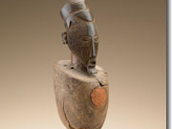
Earth Matters: Land as Material and Metaphor in the Arts of Africa
First major exhibition to examine the conceptually complex and visually rich relationship between African artists and the land upon which they live, walk, and frame their days. Approximately 100 artworks are on view in five thematic sections. For the first time, five artists create land-art installations in the Smithsonian gardens. Drawing upon a rich literature related to Earth shrines and religious organizations, this exhibition also contributes new and ground-breaking research on contemporary earthworks in Africa.

Chéri Samba - exhibition
Samba’s paintings reveal his perception of the social, political, economic and cultural realities of Zaïre, exposing all facets of everyday life in Kinshasa. His canvases offer a running commentary on popular customs, sexuality, AIDS and other illnesses, social inequalities, and corruption. From the late 1980s on, he himself became the main subject of his paintings. For Samba, this is not an act of narcissism; rather, like an anchor on TV news broadcasts, he places himself in his work to report on what it means to be a successful African artist on the world stage.
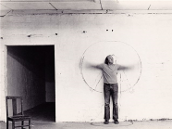
Opening ‘Plato’s Cave’: The Legacy of Kevin Atkinson (1939-2007)
A protean and controversial artistic personality between the 1960s and the 1990s, Kevin Atkinson embraced a multiplicity of approaches to making art and made a deep impression on generations of students at UCT. This exhibition, drawn from the Atkinson’s underground studio named ‘Plato’s Cave’, is both a posthumous tribute and an attempt to come to a greater understanding of the impressive contribution that he made to South African art, both as an artist and an educator.

Lines, Marks, and Drawings: Through the Lens of Roger Ballen
Roger Ballen (b. 1950) has been shooting black-and-white film for nearly a half-century. A New York native, he has lived in South Africa for more than thirty years. Ballen's photographs of rural Afrikaners in their homes and urban-based "outsiders" in windowless rooms quickly became distinguished for their interior arrangements and the events that transpired among the people, animals, and furnishings within. Ballen's interest in line-whether of coat hangers, electric wire, or marks made on walls-has been constant.
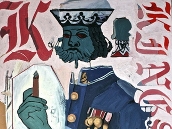
George Afedzi Hughes: Collisions (exhibition)
Recent paintings by Ghanaian-born artist George Afedzi Hughes. Hughes's recent work uses art as a tool for cultural provocation, by challenging contemporary systems of order and engaging notions of violence, including the consequences of misused power. He utilizes creative processes that reactivate imagery through a variety of media in which elements from diverse sources such as war machinery, military uniforms with epaulettes, automobiles, colonial / historical references are charged with meaning.

Native Nostalgia - Group Exhibition
Exploration of nostalgia in five African countries; Senegal, Nigeria, Algeria, Benin and South Africa. This exhibition tells the stories of bygone eras – positioning them firmly within present day narratives. Through architecture, construction, cartography, photography, communal archives, and historical reenactment, each artist and participant has a conversation with a past through which they did not live by juxtaposing design elements with those of today.
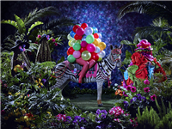
The Future White Women of Azania - Athi Patra Ruga (exhibition)
In The Future White Women of Azania Ruga is turning his attention to an idea intimately linked to the apartheid era’s fiction of Azania – a Southern African decolonialised arcadia. But Ruga, in his imaginings of Azania, has stuck closer to the original myth, situating it in Eastern Africa as Pliny the Elder did. Here Ruga in his map The Lands of Azania (2014-2094) has created lands suggestive of sin, of decadence and current politics. Countries named Palestine, Sodom, Kuntistan, Zwartheid and Nunubia are lands that reference pre-colonial, colonial and biblical regions with all their negative and politically disquieting associations.
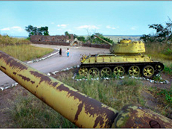
Foto's Hans van Rhoon uit Angola, Brazilië en Zeeland
Fotograaf Hans van Rhoon, als hoofddocent verbonden aan de Fotoacademie in Rotterdam, en historicus en journalist Jeroen Junte maakten in het voorjaar van 2013 een reis langs Brazilië, Angola en Zeeland, waar de oorsprong ligt van de Nederlandse slavenhandel. Met indringende foto’s en reportages hebben ze vastgelegd hoe 350 jaar later op deze drie locaties verdeeld wordt omgegaan met een gedeeld verleden.
Het is dit jaar 150 jaar geleden dat in Nederland de slavenhandel werd afgeschaft. Meer dan 12 miljoen mensen werden in de voorgaande vier eeuwen vanuit Afrika als handelswaar verscheept. Het Nederlandse aandeel in deze Atlantische slavenhandel bedraagt ongeveer 600.000 mannen, vrouwen en kinderen. Dagelijks tussen 14 en 15 én 18 en 19 uur
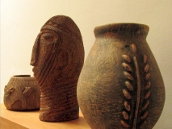
Clay Objects, Past and Present Aesthetics
A collection of pottery from several parts of Africa and the rest of the world. The exhibition shows how the use and appreciation of clay objects has evolved with time.
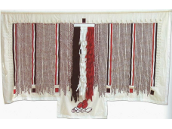
Abdoulaye Konaté - De Wereld in Doeken
Bijzondere tentoonstelling met wandkleden van de Malinese kunstenaar Abdoulaye Konaté. Konaté (1953) heeft wereldwijd geëxposeerd, nam in 2007 deel aan Documenta 12 in Kassel, Duitsland, en ontbreekt in geen van de recente naslagwerken over hedendaagse Afrikaanse kunst. Met textiel stelt hij monumentale ‘wandsculpturen’ samen. “De Wereld in doeken”, waarin een negental wandkleden wordt geëxposeerd, is de eerste solotentoonstelling van Konaté in Nederland.
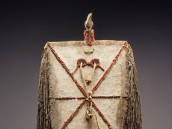
Uit de kast… nu op zaal (tentoonstelling)
Een selectie uit die ‘verborgen schatten’ van het Afrika Museum. In het depot werden de kasten en laden onderzocht op hun inhoud en wat hieruit tevoorschijn kwam was een breed scala aan veelsoortige voorwerpen: menselijke figuur- en diervoorstellingen, sieraden, hoofddeksels en bijzonder vormgegeven dagelijkse voorwerpen zoals kruiken. Ook de gebruikte materialen zijn heel divers: hout, metaal, aardewerk, textiel, steen en glas.



